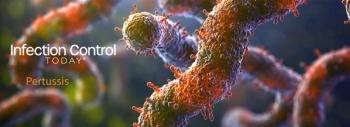
Navigating Infection Prevention Challenges Amid 2024 Outbreaks: Strategies for Success
As infectious diseases resurge in 2024, this article explores how IPs can manage outbreaks, allocate resources, use technology for surveillance, and collaborate with senior leaders to ensure business continuity and patient safety in health care settings.
Recent outbreaks of infectious diseases such as mpox, measles, and meningitis in 2024 have underscored the critical role that infection preventionists (IPs) play and have brought to light the intricate challenges of IPs in the hospital. Despite the height of the COVID-19 pandemic seemingly behind us, the profession continues to navigate widespread challenges like staffing and training gaps. On top of these ongoing stressors, infectious disease outbreaks present additional hurdles. Beyond the seasonal returns of common viruses such as influenza, 2024 has seen a resurgence of some infectious diseases in the US, including
These recent outbreaks highlight the heightened role of IPs in protecting patients, hospital staff, and the public. While outbreaks are part of an IP’s responsibilities, they are not predictable or accounted for in day-to-day schedules. As a result, when infections spike, IPs must navigate an increased workload while prioritizing resource allocation, communication, protocol adaptation, adherence with hospital procedures for outbreaks, and managing typical day-to-day responsibilities. Compounded with staffing shortages and training gaps, IPs must take a proactive and strategic approach to managing periods of expanded responsibilities.
Finite Resources and Increased Responsibility
When an outbreak of an infectious disease like measles occurs, hospital priorities must shift to quickly craft a case definition, limit further transmission, and implement containment strategies. Routine tasks that would otherwise take priority in an IP’s workday risk falling to the wayside. For example, IPs regularly ensure that health care personnel (HCP) have presumptive evidence of immunity to measles through written vaccination documentation or laboratory evidence of immunity. However, during a measles outbreak, 2 doses of measles vaccine are recommended for all HCP, and IPs are responsible for surfacing and complying with elevated protocol.
During an outbreak, IPs are responsible for quickly updating and implementing new response protocols to emerging diseases, facilitating staff adherence with updated procedures, and continuous monitoring and feedback to maintain high infection control standards. IPs face challenges in prioritizing and securing necessary resources during multiple concurrent outbreaks. With resource allocation being finite within a hospital—personal protective equipment (PPE), room allotments, available quarantine areas—inevitably, teams will hit bottlenecks that present additional challenges in preventing transmission and new infections.
Implementing Strategies for Best Outcomes
With the potential for an infectious disease outbreak looming at any time, infection prevention teams must have reliable methods and resources in place to quickly identify, triage, and respond to an outbreak. To accomplish this, many IP teams rely on a combination of routine infection surveillance, threshold alerting to increases in infection incidence, and gauging observations from astute clinicians and HCPs.
Teams should be prepared to develop a case definition for the outbreak and methods for identifying cases, as timing is critical in preventing new cases and reducing potential harm. The CDC maintains a
Several resources are available online and through local health departments on initial steps to follow, how to prepare, and the resources needed. While health systems can aim to plan, many considerations are needed, such as briefing plans (signage, education, messaging) and anticipating PPE requirements, which can present a challenge. All stakeholders need additional education on different levels, and IPs are responsible for ensuring those levels are met for the best patient, staff, and community outcomes.
Beyond the role of IPs, senior leaders should consider how various infectious disease outbreaks could impact business continuity within a health system. Hospital administration and clinical leadership should collaborate to establish plans outlining required resources and a communication plan. This begins by fostering strong partnerships across many departments, including, but not limited to, pharmacy, IP, laboratory, and supply chain, to promote smooth operations and, ultimately, patient safety.
Wielding Technology to Strengthen Infection Preventionist Efforts
Infection surveillance tools can help to proactively identify and alert IPs to aberrations in infectious disease incidence that may otherwise go unnoticed. These systems can be extremely useful in conducting investigations or identifying actions to minimize further spread and can often assist with case reporting requirements to external entities. Tech-enabled solutions help IPs maintain a comprehensive picture of the outbreak within the facility and local community. Additionally, analytics capabilities within surveillance tools can assist IP teams with timely data visualization and effective communication of supporting data to relevant stakeholders.
Regardless of outbreak status, IP is asked to manage a slew of information that can be challenging to cover manually. Healthcare data collection has never been more robust. The
In the face of infectious disease outbreaks, such as the measles and meningococcal increases observed in early 2024, IPs and their teams must work closely with senior health system leaders to ensure business continuity and patient safety. IPs should advocate for comprehensive resource and communication plans, and foster collaboration across departments. Utilizing advanced technology and infection surveillance tools is essential for proactive disease monitoring, thorough investigations, and effective case reporting, while data analytics can help enhance communication with stakeholders. By investing in robust technology and promoting interdepartmental cooperation, IPs and their teams, with support from senior health system leaders, can build a resilient health care system capable of successfully navigating future outbreaks.
Newsletter
Stay prepared and protected with Infection Control Today's newsletter, delivering essential updates, best practices, and expert insights for infection preventionists.






